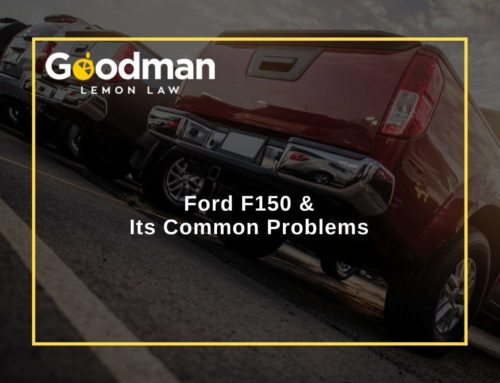Two class-action lawsuits regarding the Chevy Shake were initiated recently against General Motors. According to the suits, certain GM vehicles may experience severe shaking due to defects in either the driveshafts or the transmissions installed by the manufacturer. The claim also represents that GM was familiar with the issue and didn’t notify the customers. This article discusses which GM vehicles are included in class-action suits, the consequences to the consumers, and what measures GM has taken to resolve the problem.
What’s the Chevy Shake?
Two lawsuits deal with the infamous Chevy Shake problem. The first class-action suit, filed in 2019, identifies a defective aluminum driveshaft. The second Chevy Shake suit, filed in 2020, alleges that more than a dozen GM automobile models have defective transmissions that vibrate while shifting gears. The first lawsuit includes all US states. The second lawsuit covers all of the US except Florida. AutoBodyNews.Com states that Floridian GM vehicle buyers are not included in the second class-action suit because a lawsuit representing the same issue (Weiss vs. GM) did not get class-action certification countrywide.
Numerous reports claim the faults make a vehicle uncomfortable to drive. The vibration is severe enough to make the driver believe the car has been struck. Moreover, the shaking has allegedly caused drivers to lose control and cause an accident.
Two plaintiffs filed the complaint against GM alleging the aluminum driveshaft in their vehicles caused uncontrollable shaking, which caused the drivers to lose control of the cars. The plaintiffs allege the issue occurs while driving the vehicle at highway speeds. They claim the vibration can weaken the driveshaft over time, ultimately causing it to break.
The suit alleges that General Motors intentionally sells and leases vehicles while understanding the aluminum driveshafts can experience severe shuddering that can cause the car to divert from the road. Instead of telling the consumers about the possible dangers of the defect, the class-action lawsuit claims that GM hides the Chevy Shake information and continues to sell and lease the vehicles.
The company has declined to recall the cars to replace the driveshafts and hasn’t agreed to repay drivers the money they spent on replacing the faulty driveshafts.
GM Vehicles You Need to Avoid
The second lawsuit regarding faulty transmissions affects the following GM car and truck models manufactured starting in 2015:
- Chevy Corvette – 2015-Present
- Chevy Silverado – 2015-Present
- Cadillac Escalade and Escalade ESV – 2015-Present
- Yukon, Yukon XL, GMC Sierra, Yukon Denali XL – 2015-Present
- Chevrolet Camaro – 2016-Present
- Cadillac ATS, ATS-V, CT6, CTS-V, CTS – 2016-Present
- Chevy Colorado – 2017-Present
According to the lawsuit, each of the above-mentioned models contains one of two 8-speed transmissions manufactured by General Motors, namely, GM8L45 or GM8L90. It further claims that while driving these vehicles, when the driver speeds up or slows down, the vehicle hesitates.
The class-action suit claims that these GM vehicles shake, vibrate, clunk, jerk, or experience hard shifts while changing from one gear to another. The suit also alleges that the driver can experience a shudder while driving the car in a single gear and not just while changing gears.
Consequences for Chevy Owners & Consumers
In the second Chevy Shake class-action lawsuit, the plaintiff claims to have purchased a defective GM vehicle. According to the suit, in one instance the transmission shifted from reverse to drive so powerfully that the driver almost hit the garage door. While the suit alleges no personal injury to the driver, the defective transmission affected the owner monetarily. The owner believes he should have been notified about the fault in the vehicle.
The suit alleges that the Chevy Shake problem in some GM vehicles may result in early failure of the transmission. The shaking and severe vibration in the vehicle may be caused by the transmission, the torque converter, or perhaps both. The shaking causes excessive friction across surfaces, hydraulic systems, and gears.
Consequently, the system fails to operate in the way it was designed. Metal shavings caused by the friction spread throughout the transmission, which in time causes all kinds of problems, resulting in parts becoming damaged and needing replacement.
Jamison & Bostick’s Chevy Claim
The first Chevy Shake suits were filed by Branden Jamison and Kim Bostick, who allege they bought defective vehicles. Jamison and Bostick outline in their suits that GM sold and leased numerous vehicles containing faulty powertrains or drivelines—the part that turns the vehicle’s wheels. The claims state that this defect is responsible for violent shaking while driving the cars at highway speeds. They go on to describe the problem in more detail and allege that the component of the driveline called the driveshaft is responsible for the shaking.
The class-action suit claims that because of the defect by General Motors, the vehicles may go out of control on the highway while accelerating, potentially causing the drivers to stray off the road.
The claim states the issue can get worse if not fixed in time. According to the drivers, the technical fault in the design of the driveshafts can cause the driveline to fail completely. The automobiles are obviously unusable without a functioning driveline.
The plaintiffs further claim that General Motors knew or, at least, should have been aware of the situation after the vehicles were sent out in the market because countless reports were made about the defect.
Has GM Addressed the Chevy Shake issue?
The class-action suits about Chevy Shake allege that instead of notifying the buyers about the defect and dangers the problem can cause, GM is concealing it so they can keep on selling and leasing the vehicles.
The only action General Motors has taken so far to address the problem was to issue 13 service bulletins in 2015 about the transmission defect. The purpose of those bulletins was to notify the dealerships about the issue and give them advice on how to solve the problem.
On the other hand, the plaintiffs claim that GM isn’t providing solutions, and they deliberately decline to recall the vehicles. Moreover, the company isn’t reimbursing the consumers who incur the repair cost out of their own pockets.
The service bulletins mainly address two types of vehicles: pickups and SUVs, since both of them show the different sources of vibrations. The SUV bulletins indicate that a poorly attached roof sheet could be the potential cause of the shaking. The proposed solution is to immediately fix the roof bows. The truck bulletins indicate the need to re-tighten body mounts, check tire alignment and powertrain angles, and change driveshafts.
The online reports about these supposed Chevy fixes, however, tell a different story. A dealership complained on 30 March 2016 about a 2016 Chevy Silverado 1500 with the familiar shaking problem, detailing that the truck experienced Chevy Shake at speeds between 38 and 70 mph. The vehicle had an 8-speed transmission and 5.3L V-8 motor, a 3.42:1 rear axle, and a locking differential. The dealer says he has been selling GM vehicles for more than 55 years, and if customers test-drove this 2016 Silverado, no one would ever buy a car from him again.
Another consumer who owned a 2017 Chevy Silverado 1500 encountered the Chevy Shake at around 25,000 miles. The complainant said that the shake in the center console was so severe from side to side that the whole cabin shuddered, threatening to eject a drink from the cupholder at any moment.
A woman related that she paid more than $1,400 to repair her defective truck, but the shake continued to exist. Her dealer allegedly told her that these kinds of vibrations are normal and shouldn’t need repair.
The first Chevy Shake class-action suit claims that replacing the defective aluminum driveshafts with custom shafts made of steel solves the problem.
Contact Us Today If You Just Bought a Faulty GM Vehicle
If you have a defective GM vehicle on your hands, you may be wondering what options are available to you. Put your worries to rest. Michael J. Goodman Lemon Law PLLC of Arizona has your back. If you experience a shake or vibration in your GM vehicle, your first step is to engage a qualified mechanic to determine whether the shake or vibration is caused by a defective driveshaft or transmission. Other problems can also result in shaking and vibration in your vehicle. If the driveshaft or transmission is the source of your particular problem, you may very well be eligible to become a party to one of the Chevy Shake class-action lawsuits.
Your next step, therefore, should be to obtain legal counsel. You can get a free, no-obligation consultation from Michael J. Goodman Lemon Law PLLC about your Chevy Shake problem. Michael and his expert team of Lemon Law lawyers have years of experience in solving Lemon Law cases in Arizona. Michael leads his team with passion and confidence..
Michael J. Goodman Lemon Law PLLC will first evaluate your Chevy Shake claim to determine whether your vehicle falls under one of the existing lawsuits. Michael will consult with you about the situation and advise you whether to pursue the Chevy Shake suit or prepare an individual Lemon Law claim against GM. Either is a valid option, depending on the nature of the problem with your vehicle. Let Michael J. Goodman help you sort it out so you make the best decision to protect your rights and receive the compensation you deserve. Get started today by requesting your no-cost, no obligation initial consultation with the nearest office of Michael J. Goodman Lemon Law PLLC of Arizona.








